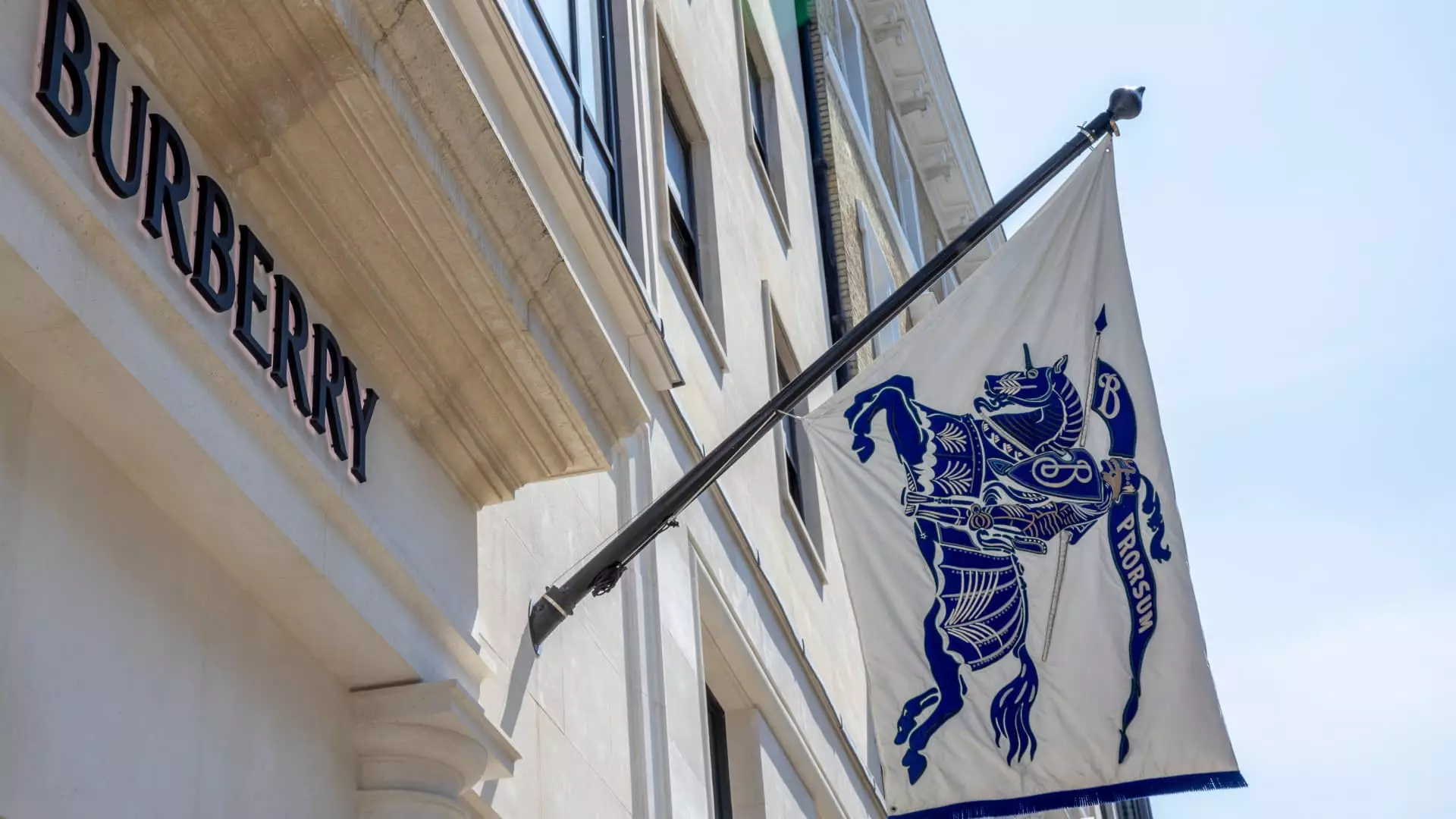Burberry, a stalwart name in the luxury fashion industry, is unveiling significant organizational changes in a bid to navigate the murky waters of its ongoing transformation. As its leadership anticipates a calculated realignment, the announcement of potential job cuts impacting approximately 1,700 employees is not only a strategic maneuver but also a stark reflection of the brand’s precarious situation. The concept of organizational change, especially one that significantly reduces human resources, raises alarms. Are these adjustments a genuine effort towards revitalization, or merely a desperate strategy to mask deeper issues?
Sales: A Flicker of Hope or Dwindling Flames?
Burberry’s sales figures exemplify the dichotomy between expectation and reality. A slight dip of 6% in the fiscal fourth quarter may appear less severe than anticipated; however, the broader context tells a more disheartening story. With an annual revenue decline of 12% overshadowing earlier predictions, it’s clear that even the luxury sector struggles against mounting pressures from macroeconomic factors. The question lingers: is Burberry’s signature appeal waning, or are external conditions suffocating its potential? The impact is particularly palpable in regions like Asia-Pacific, where consumer sentiment has shifted dramatically, suggesting a broader cultural disconnect that the brand must urgently address.
The Geopolitical Elephant in the Room
Burberry’s CEO, Joshua Schulman, offers a general sense of optimism amidst the turbulence. However, his words cannot overshadow the reality of geopolitics looming over the luxury sector. The acknowledgment of increasing geopolitical tensions and the looming tariff risks signal a precarious balance between ambition and existential threat. This context of uncertainty not only complicates Burberry’s recovery plan but also invites scrutiny into the company’s long-term viability. In an environment that prizes agility and responsiveness, is Burberry equipped to pivot in response to these global economic pressures, or will it succumb to the weight of its historical legacy?
America: A Fall from Grace
Previously lauded as a beacon of strength, Burberry’s recent downturn in the American market is troubling. The swift transition from gains to a 4% loss in sales within mere months reflects an erosion of consumer confidence in what was once perceived a luxurious sanctuary. The sudden decline prompts an unsettling analysis of how quickly fortunes can shift, resulting from both internal missteps and external economic stresses. How can Burberry reclaim its stake in the American luxury market while grappling with the ramifications of shifting consumer priorities? If the brand fails to engage meaningfully with its audience’s evolving values, it risks further alienation.
The luxury sector is notoriously fickle, where prestige can dissipate rapidly. As Burberry implements these far-reaching changes, a crucial question looms: will it emerge as an industry leader refashioned for modernity, or will it become yet another cautionary tale of a historic brand struggling to navigate a new world? In demanding the essence of timelessness, Burberry must also be willing to innovate. The pressure is on, and the stakes have never been higher.

Leave a Reply